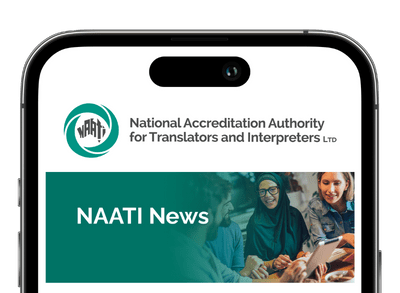By Ekaterina Korolkevich-Rubbo, A NAATI Certified Provisional Interpreter
The idea for translation of Russian Nursery Rhymes into English came to me when my daughter Ellen was born.
All my life I’d lived in Russia always loving folklore, beautiful fairy tales, wise fables and tender songs.
I started questioning the whole idea of culture, identity and belonging when I came to Australia.
When my daughter was tiny I decided to read and speak to her in Russian, while in the household we had English as the dominant language as my husband is Australian.
So, each night I would read to her a few books: one in Russian and one in English, and I would also sing lullabies in Russian as it is a language of my soul.
I was surprised by my daughter’s curiosity, acceptance, flexibility and fast learning. She was accepting the environment as it emerged around her.
When kids grow up in a monolingual situation it comes to them naturally on many levels. Everyone speaks the same language; it flows and there is no interference and misunderstanding. It is supported by heritage and tradition.
What do you do when you live in a bilingual situation? You switch on and off and develop mechanisms for speaking and understanding both languages.
We know that children can do that when they are exposed to more than one language in their life. But surely one language is stronger than the other.
I realised that no matter how hard you try, your child chooses the language of the dominant environment and develops communication skills in that language.
When I started working on translation I just wanted to play with words and rhymes while my daughter was asleep. Rhymes seemed to be simple and playful. But in a while, I realised it was quite challenging work.
First, I picked up some of my favourite rhymes, and then loosely translated them into English without thinking about perfect rhyming. Then I searched for the words that would provide the meaning but also facilitate the mood and playfulness of those poems and achieve a better rhyme.
I drew pictures myself in the style of the Russian folk painting Lubok.
My book was hand-made with hand sewn pages and it was the first book I have ever created.
That was a precious project, the gift to my daughter that had been growing up in an English-speaking environment developing bilingual skills.
Once one of my friends saw my book and suggested that I should publish it.
I laughed. Who could be interested in it except my family? I thought that it had only personal value, a family souvenir.
After some thought and encouragement, I started researching children publishing companies and found one in Queensland that took my book on board.
What a thrill!
I have never published a book before and now it was going full steam ahead. I am very grateful to Elaine Ouston, the editor of Gondor Writers centre who helped me to edit, compile and publish the book.
Since its publication I found that it raises interest in different schools and multicultural communities in Australia.
Here is a little sample rhyme from the book:
Russian original rhyme:
Петушок-петушок
Золотой гребешок
Масляна головушка
Шелкова бородушка
Что ты рано встаёшь,
Деткам спать не даёшь.
English translation:
The cockerel with golden comb
Singing loudly to the dawn
Wobbling beard
Scarlet head
Let the Children stay in bed.
Launching the book was very special to me and my multicultural community in Australia. I am very grateful for this experience.
We must keep our traditions and encourage the new generation to remember where their parents came from. Their life gets richer and more meaningful that way.
Learn more at A Little Bird Told Me and Artfulness
This post was written by Ekaterina Korolkevich- Rubbo, a NAATI Certified Provisional Interpreter in Russian. Ekaterina is originally from Russia, where she initially used her translating and interpreting skills in jobs related to the film, journalism and sports industries.
Since arriving in Australia, she has used her skills in Australia’s Russian community, and has worked for organisations such as the Ethnic Community of Australia and the Department of Immigration. More recently she has focused on the health service, using her interpreting skills in hospitals on the Central Coast of New South Wales.
